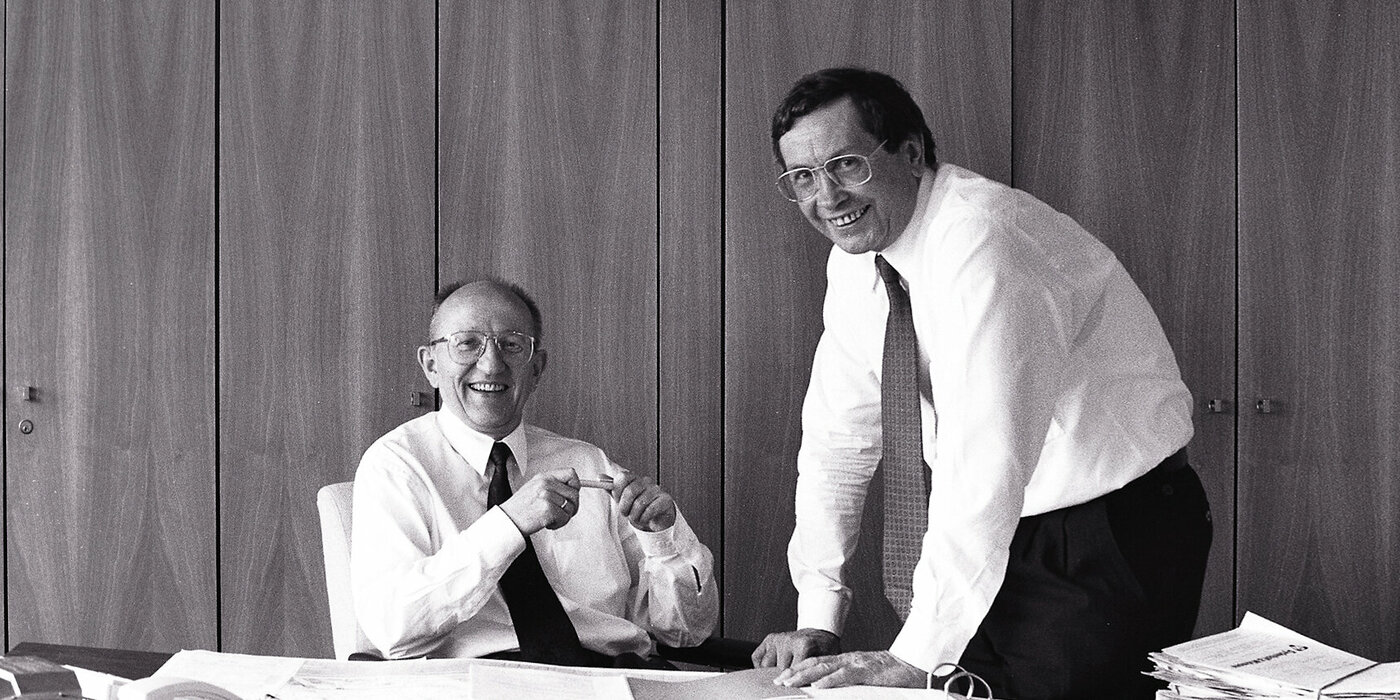The future has a long tradition with us.
We know where we come from. And we know where we want to go. In our journey from a traditional engineering office to a modern engineering company, we have always met the highest standards in terms of zeitgeist, innovation and sustainability. Our focus is on the future – in how we think, and what we do.
The roots of the company lie in the spin-off of an engineering office in 1950 from the chair of solid construction at Darmstadt Technical University (TU). As early as the 1950s, Prof. Dr.-Ing. Albert Krebs was a key employee of this engineering office. His principle was: “Consistent quality in structural and civil engineering”.
The close connection with the TU Darmstadt is a tradition we keep to this day.
In 1965, Prof. Dr.-Ing. Albert Krebs became the first partner in the engineering office. This is an essential foundation stone for future successes of the company that still bears his name today.
In addition to inspection, the office now also took on the design and structural engineering of ambitious projects.
The construction of Terminal 1 with rail connections to all facilities at Frankfurt Rhine-Main airport was one of the biggest projects of the century, bringing recognition and expansion in equal measure.
When Dr Gerhard Kiefer joined in 1971, the engineering office of KREBS+KIEFER was born. The technical expertise and outstanding reputation of the company’s founders are still the benchmark for our quality standards and expert work today.
With the new requirements of a society based on mobility, KREBS+KIEFER demonstrated its wide-ranging expertise in various road and rail projects. The office was becoming an interdisciplinary engineering company of national importance.
On the verge of the next decade KREBS+KIEFER Karlsruhe was established in 1987 and KREBS+KIEFER Berlin in 1990.
An integrated engineering philosophy was reflected in a diverse range of building projects, particularly in the booming infrastructure development following German reunification.
In 1991 KREBS+KIEFER was commissioned with the general planning of a new 100-kilometre-long high-speed rail line between Erfurt and Leipzig/Halle, including all the bridges and tunnels. Because its structure had grown the traditional way, the company was able to successfully carry out even projects of this magnitude.
With more than 350 employees at 14 locations, KREBS+KIEFER was now present all across Germany. It was also increasingly involved in projects elsewhere in Europe, in Arab countries, and in Asia, Africa and Eastern Europe. The spectrum ranged from stadium construction and new international project management assignments to planning large infrastructure projects. A prominent highlight was the 170 m high ship lift on the Yangtze River in China.
Now with well over 550 employees, KREBS+KIEFER was more than ever one of Germany’s most flourishing engineering firms. In 2012, IRS Stahlwasserbau became part of KREBS+KIEFER. Prominent major international projects such as Djamaâ el Djazaïr, the Great Mosque of Algiers, as well as a significant increase in demand for specialist know-how (such as in steel hydraulic engineering or in building physics) underpinned our reputation as strong, dynamic and globally respected experts and partners.
Bps rail GmbH became part of KREBS+KIEFER in 2020.
Since the end of 2021, KREBS+KIEFER is part of the globally operating Dorsch Group. In cooperation with this group, now over 3,400 staff members in around 50 countries are interconnected. The range of services of the Group covers planning and consulting in the sectors of building construction, transport route construction by rail, road and air, water and environment as well as energy supply infrastructure.
